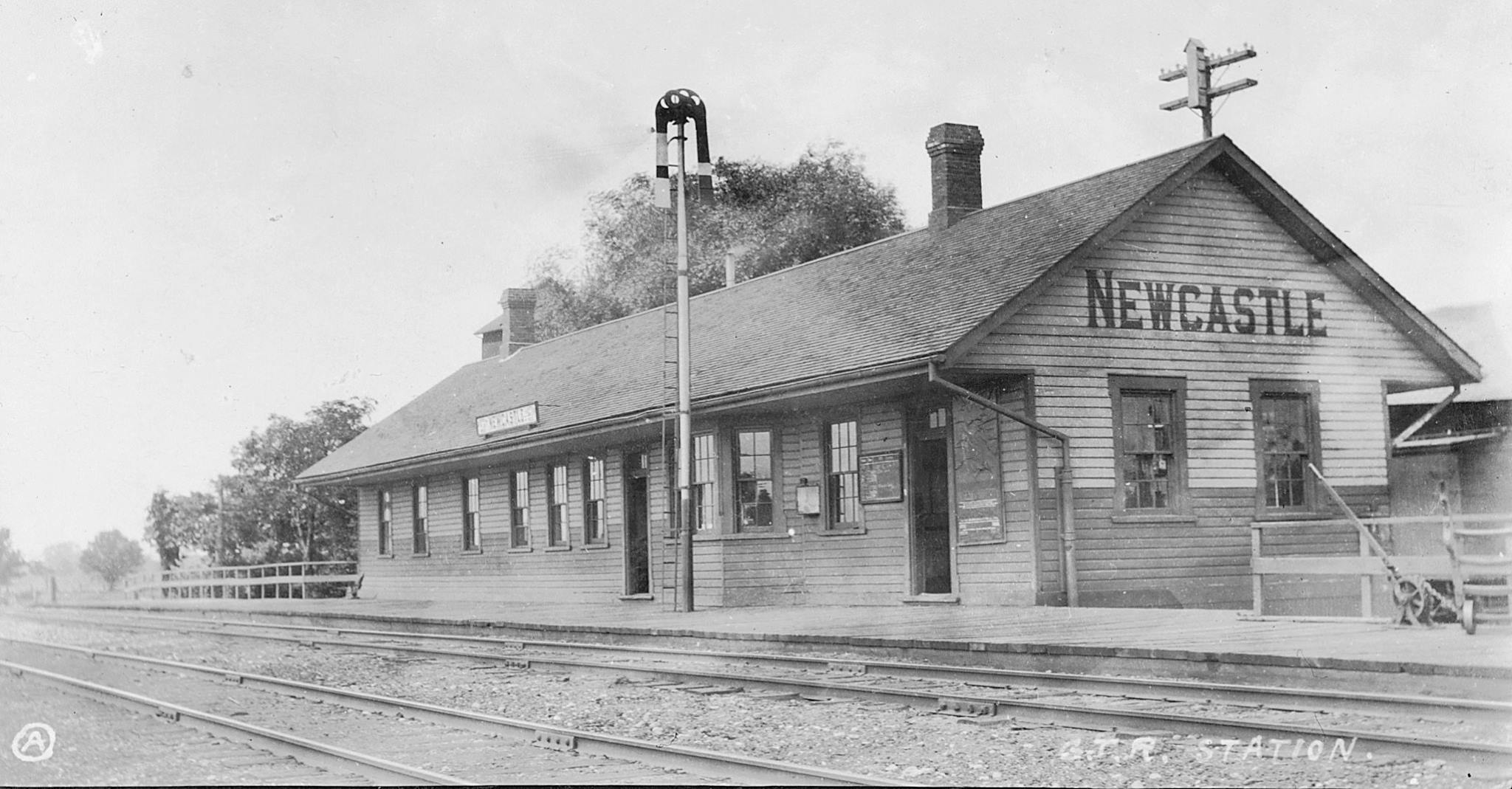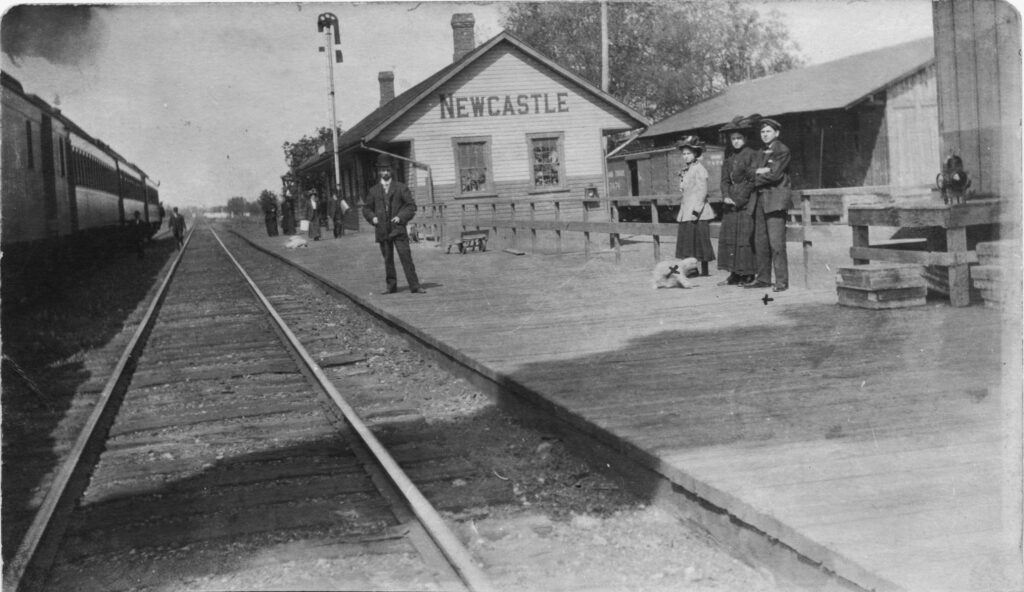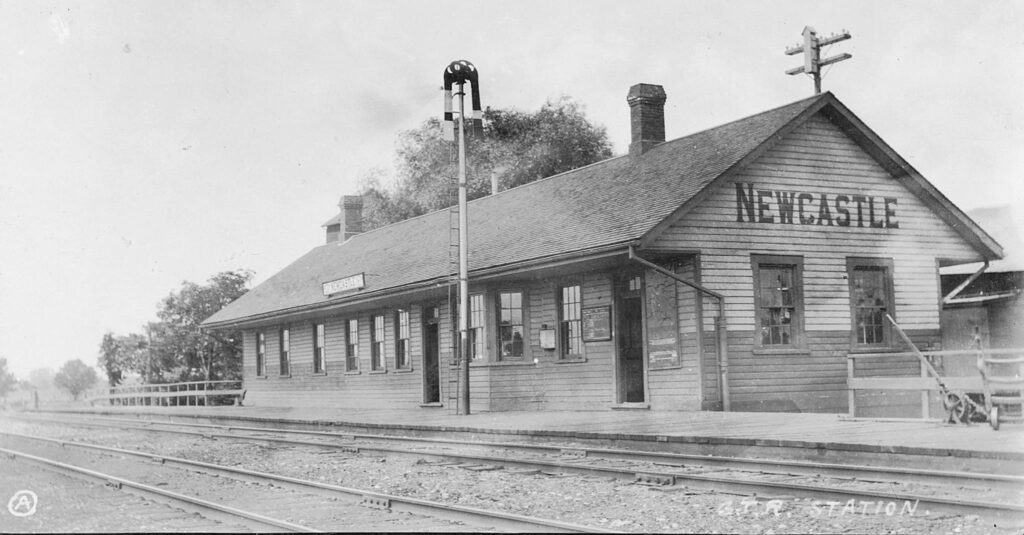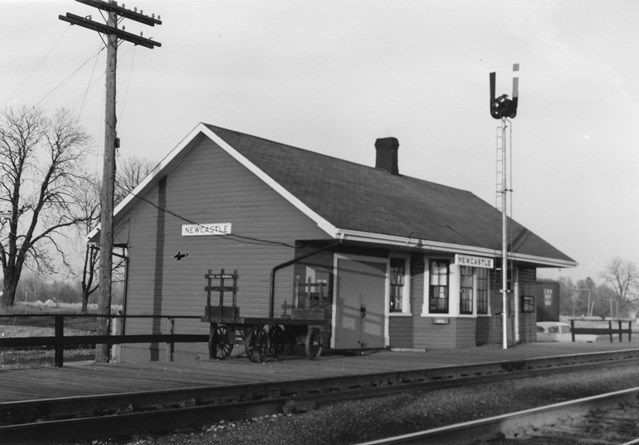Summary
Newcastle Station was built by the Grand Trunk Railway in 1856 while its construction was underway between Montreal and Toronto. No photos of this station are known to exist, though it would have likely followed the same design as the surviving stations in Port Hope, Napanee, and Ernestown to the east. It would have been a small, rectangular structure with limestone exterior walls with up to four chimneys protruding from its pitched roof. Each one would have connected to a fireplace or wood stove to provide warmth for passengers during cold winters. The first revenue passenger train arrived at Newcastle Station on October 27th, 1856. A total of six passenger trains were stopping at Newcastle each day by the time of Canada’s confederation in 1867, increasing to eight by 1869.
To ease congestion on its line between Toronto and Montreal, in 1883 the Grand Trunk announced its intentions to lay a second main track over that entire distance. The segment between Port Union and Port Hope was done last between 1901 and 1903. As part of this work, the original station at Newcastle was torn down and replaced. The new station was a rectangular wooden structure with a waiting room and station agent’s office at its east end. A long baggage room originally extended outwards from the west side of the building, which took up more than half of the total space inside the station. As was common with many Grand Trunk stations built around the turn of the 20th Century, the station agent’s office in Newcastle Station had a bay window facing the tracks for improved visibility. An additional track ran behind the station to a freight shed where local businesses could ship or receive freight by rail. The Grand Trunk encountered financial difficulties during the early 20th century, culminating in its nationalization and subsequent absorption into Canadian National in 1923. The station’s long baggage room was significantly shortened at some point under Canadian National.
Newcastle Station reached its peak of eleven trains per day by 1940, shortly after the end of the Great Depression. Service to Newcastle remained stable in the postwar era, though the mass adoption of automobiles and air travel during that period would take a toll on passenger ridership broadly. This problem was significantly exacerbated at the local level by the opening of Highway 401 through Newcastle in 1947, which cut directly between the station and where the majority of Newcastle’s residents lived on the opposite side. This severed multiple surface streets and left Mill Street as the only way for most Newcastle residents to access the station. The highway also ran parallel to the railway across most of its distance which further disincentivized locals from taking the train. Service to Newcastle Station was reduced to five trains per day by 1960 and it was closed to passengers and demolished later the same decade. The property the station once stood on is now occupied by an industrial park.
Condensed Station Info:
| Location: | Served By: | Current State: | Date Built: | Date Demolished: |
| Toronto Street | Grand Trunk (1856 – 1923) Canadian National (1923 – 1960’s) | Demolished | 1856 (First) 1903 (Second) | 1903 (First) 1960’s (Second) |





